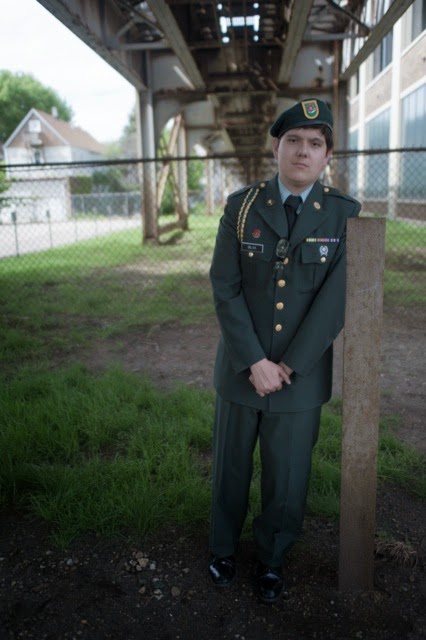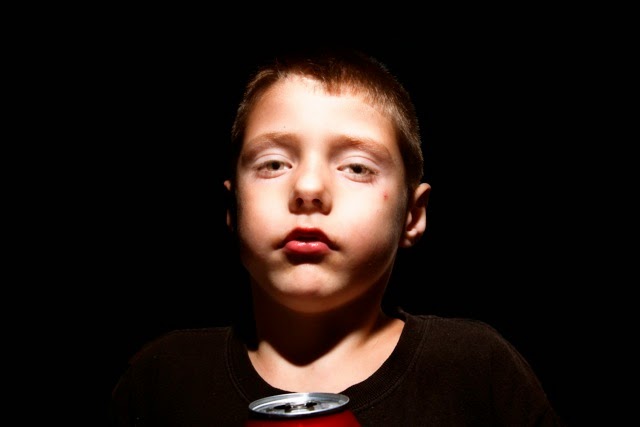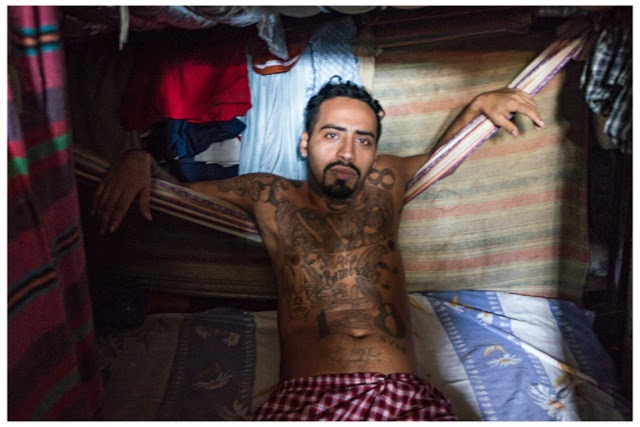Excerpts taken from an article from That’s
Inked Up, a blog on contemporary printmaking, by Teresa J. Parker
"Ed Paschke: In Private Hands", October 6 - November 30, 2014
Benedictine University's Fr. Michael
E. Komechak, O.S.B., Art Gallery, http://www.ben.edu/artgallery,
is pleased to present a special commemorative exhibition on famed Chicago artist, Ed
Paschke. This exhibit gives us a look at his work, since his passing
ten years ago. It features works from the family's private holdings, and some
rarely seen works, including prints and posters.
Ed Paschke (1939 –
2004) was a Slovak-American painter. He studied at the Art Institute of Chicago
and later worked as a commercial artist, until he was drafted into the Army in
1962. When he returned to Chicago, he worked as an
illustrator and then went to teach painting at Northwestern University. His
prolific career was cut short when he died on Thanksgiving morning, in 2004, of
an apparent heart attack.
For those of
you unfamiliar with Paschke's prints or paintings,
they earned him worldwide acclaim, and
secured a spot in the art history annals for Chicago's Imagist Movement;
popular in the latter part of the 20th century. Paschke was aligned with a group of artists working in Chicago whose imagery was drawn from cartoon-like characters. Their bond has been a staple of the Chicago art scene, and has inspired numerous artists and followers, Tony Fitzpatrick and Jeff Koons, to name a few.(Koons studied with Paschke at Northwestern University, and admits Paschke's influence upon his own ideas.)
Paschke's love of making art
started as a child while making objects with his father and brother. He liked
Disney cartoons and grew up in Chicago during a period of relative calm until
the civil rights marches came to the Midwest. The thing
about Paschke's work is that he brings out the crust, if your will, of our society.
I can't say these images of pimps, strippers and gestapo-like characters aren't
prevalent in Chicago. They can be found, but one gets an oddly curious feel for
these portraits. They are flamboyant, wild and gregarious. His work includes
carney performer posters and weirdly misshapen musicians, with the ever
seductive Marilyn Monroe picture stuck in there, just for fun.

A lot has
been made of Paschke's fascination with these oddballs, his interest in Latino
and African-American male portraits, with a few gangsta gun references and
mask-like hooligans. These images are full and present, but there is nothing to
suggest Paschke was truly mesmerized by these subjects any more than he was of
painting a self-portrait or any other subject. They were subjects readily handy
at the time and he grabbed at them, pulled them together in psychedelic neon
colors and blazed a trail for us to follow.
"I like a lot of color. When I
was a kid, I always found fireworks really fascinating. The way that
firecrackers are packaged. The circus, too. The heightened sense of reality and
the total spectacle of it."
His
portraits of Michael Jordan were timely, with the Chicago Bulls championships
of the 1990s, but he seemed more akin to finding and using the subjects as a
tool for expanding his craft. The masks harken back to Picasso's use of
primitive African masks in his work. At one point, Paschke eliminates the
subjects' eyes, mouth and nose, deliberately de-personifying them. They have no
place or time or identifying features, and then become, in a sense, a universal
man. I am reminded of the work of Rodin, who achieved a universal masculinity.
Paschke arrives at the same place via his own devices.

Paschke
chose to change and manipulate his portraits. He chose to change their sex, and
change their face from their body. His compositions are action-packed, and
little is left open for us to wander far from the subject. He commands our
attention with dexterity, quirky combinations of images and text, and linear
bands of color that speak of the MTV Max Headroom days. His collages
portray our fragmented society and our inability to 'tone it down' any longer.
In a sense, it's as if Paschke is saying that since we can't control what’s
happening in our visually bombarded world, then we may as well embrace it and
crank up the visual volume. He makes us aware that there are always layers
beneath one's veneer, beneath the mask we show the world.
.jpg)
I never
really bought the idea that Paschke was trying to show the seedy side of
Chicago in any specific or moralistic sense. These characters could be found
anywhere. Well maybe not Anywhere...Paschke's studio on Howard Street was the
dividing line between the big, bad city and t genteel suburbia. There would have
been enough fringy characters running around the area for a good take on some
of his subjects. Yet, the town (Chicago) is the town, and it has its plethora
of issues with mafia, gangs, guns, and the like; but it is also a town of
hard-working people, and especially hard-working artists. He was a good,
hard-working artist who chose a bold, funky subject and ran with it. Who
amongst us wouldn't have done the same?
The piece I
chose to close this article with is one that was personal for Paschke.
"Compassion" is a print of the artist and his wife Nancy. Nancy was
also an artist, and after raising two children, Marc and Sharon, she developed
a debilitating illness which required a caretaker. As Ed's career continued to
take off, people suggested he move to New York to further his career, but he
would not leave his wife. This print shows Paschke embracing Nancy as she leans
her head on his shoulder. The colors here are noticeably more somber, quiet.
They were soul mates. Two months after Paschke's sudden death, Nancy followed
after him...
The exhibition at Benedictine
University also features some of Paschke's family's work, by his father, brother, wife, son, and grandchildren.
In June 2014, the Ed Paschke Art
Center was unveiled in Chicago, with many of the artist's works and a replica of his studio. You can also visit his website at http://edpaschke.org/ed-paschke-art-center.html. Marc Paschke, the artist's son, is compiling a cataloue raisonne on his father's works. They are still seeking any owners of Paschke's work to be included in that catalogue and website, so if you own a piece, or know someone that owns Paschke's work, please contact Marc at the Ed Paschke Art Center website.
Selected Public Collections:
The Art Institute of Chicago
Baltimore Museum of Art, Maryland
Benedictine University, Lisle, IL
Birmingham Museum of Art, England
Borg-Warner Corporation, Chicago
Brooklyn Museum, New York
Carnegie Museum, Pittsburg
Centre Georges Pompidou, Paris
The Chicago Tribune
Chicago History Museum, Chicago, IL
Cole-Taylor Bank, Chicago
Contemporary Museum, Honolulu, HI
Continental Bank, Chicago
Exxon Corporation, New York
First National Bank of Chicago
Hirshorn Museum, Washington, DC
Illinois State Museum of Art, Springfield, IL
John F Kennedy Library, Washington, DC
Madison Art Center, Madison, WI
Metropolitan Museum of Art, New York
Milwaukee Art Museum, Wisconsin
Musee d'Art Moderne Nationale, Paris
Museo de Art Contemporaneo de Monterrey, Mexico
Museum Boymans, Rotterdam, Holland
Museum of Contemporary Art, Chicago
Museum Moderner Kunst, Vienna
National Museum of American Art, Smithsonian Inst.
Washington, DC
Palmer Museum of Art, Penn State University Museum,
University Park, PA
Playboy Collection, Chicago
Rutgers University, New Jersey
Walker Art Center, Minneapolis, MN
Wake Forest University, Winston-Salem, NC
Weisman Museum of Art, Pepperdine University, Malibu, CA
Whitney Museum of American Art, New York
Yale University Museum, CT
 Timothy S. Kump Bullet - Michelle
Timothy S. Kump Bullet - Michelle



.jpeg)

.jpeg)



.jpg)



















.jpg)








.jpg)




